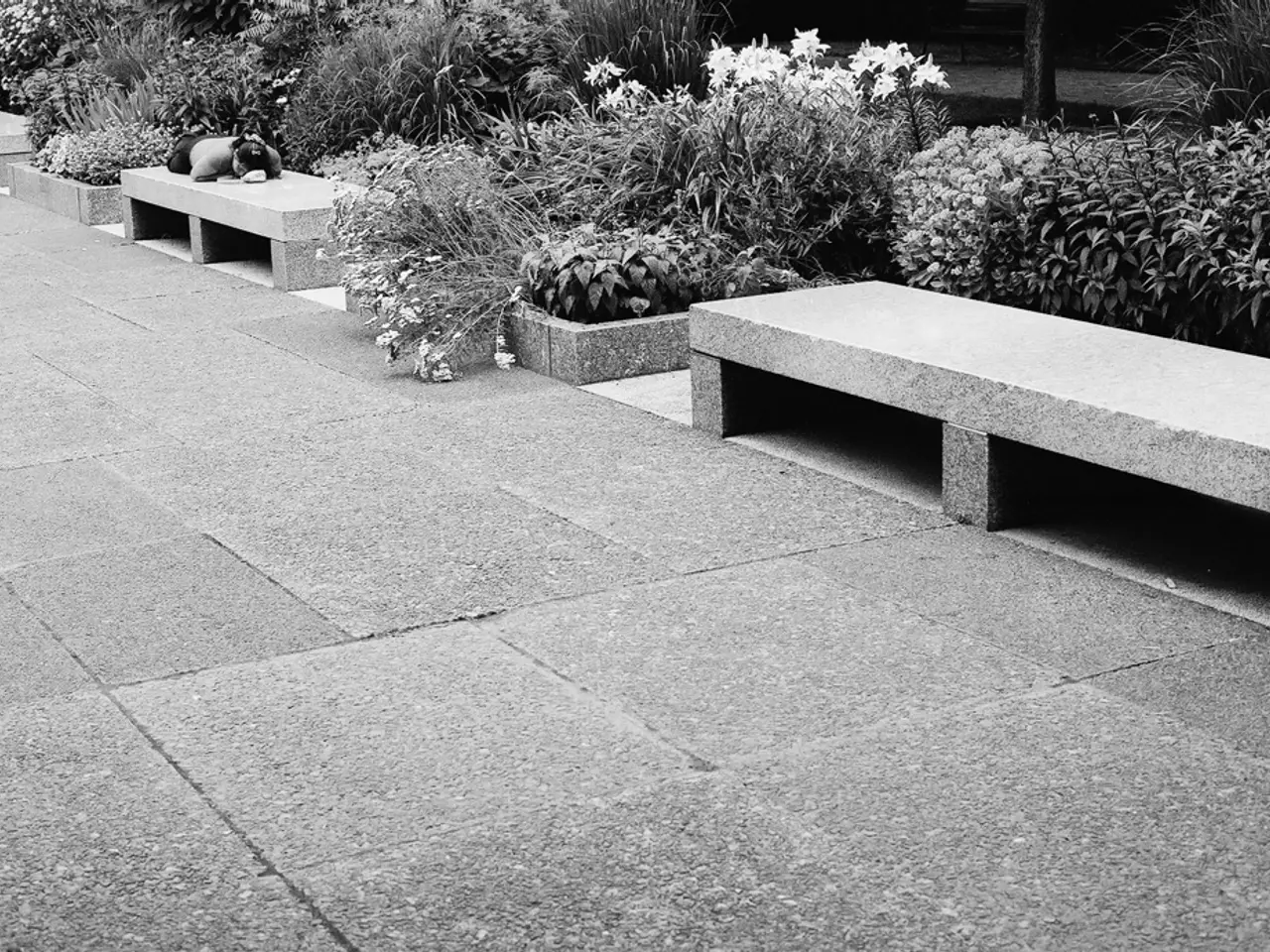Comparing Ground-Level Vegetable Plots to Portable Potted Planting Solutions
Raised garden beds and container gardens are two popular gardening methods that offer unique advantages for growing plants. These methods differ in structure, space, plant options, soil and moisture management, and portability, all of which influence gardening outcomes.
Structure and Space
Raised beds are open-bottomed, elevated gardening areas built on the ground, often made of wood, stone, or brick. They provide ample soil depth and space for roots, making them suitable for many annual plants. On the other hand, container gardens consist of pots or other containers that can be placed anywhere, including indoors or on balconies, making them ideal for limited spaces.
Plant Options and Size
Raised beds are best suited for many annual plants but may not accommodate very large or sprawling crops due to space constraints and height considerations. Container gardens have even more limited plant options since large or deeply rooted plants may not thrive well in pots.
Soil and Moisture Management
Raised beds retain heat due to thermal mass and typically have better moisture retention and drainage because they are in contact with the ground. Containers dry out faster since their soil volume is limited and lacks moisture from surrounding soil; they require more frequent organic matter and nutrient replenishment. Proper drainage holes are essential in containers to prevent waterlogging and root rot.
Portability and Aesthetics
Containers are portable and can be moved to optimize sun exposure or protect plants from adverse weather. They also offer a wide variety of shapes, sizes, and decorative options, lending an aesthetic appeal and flexibility such as vertical gardening. Raised beds are stationary and generally require more space but facilitate easier gardening by raising plants to a comfortable height, reducing bending and strain.
Choosing Between Them
These differences matter because they dictate which plants can be grown successfully, the maintenance required, space suitability, and overall garden management. For example, raised beds are excellent for focused gardening with better soil control and thermal benefits, while container gardens excel in flexibility, portability, and urban or space-limited gardening. Choosing between them depends on your space, the plants you want to grow, and how much effort and resources you want to invest in soil and water management.
Growing on Surfaces Without Soil
A container garden can be grown on surfaces without soil, such as patios, decks, driveways, parking spaces, and balconies. For this, a suitable container mix consisting of a light growing medium, a moisture retainer, and a fertilizer is essential.
Soil for Container Gardening and Closed Raised Beds
The article also discusses the soil for container gardening and closed raised beds, emphasising the importance of a well-draining, nutrient-rich soil mixture. The soil mixture used in the article is from the "All-new Square Foot Garden" book.
For More Information
For more information on topics such as soil for seedlings, no-till gardening, winter compost solution, preparing the garden for winter in a cold climate, challenges with the Back to Eden Gardening Method, raised window protected garden, tilling or not tilling the garden, pros and cons of using landscape fabric in your garden, and expanding the country garden beds, visit our website or follow us on Instagram, Facebook, or Pinterest for updates.
Additional Tips
A tall raised bed has the advantage of easy use, especially for people with health problems, and is durable for many years of gardening. Weed control fabric under an open garden bed can turn it into a container garden. If the soil is loose with no earthworms but has vermiculite or perlite, it might be a filled container mix. If the soil is rock-hard, the bed needs to be redone and natural material like straw, compost, and soil should be added. A wicking bed is a good choice for a container garden as it makes watering easier. If the soil is loose and earthworms are present, it is most likely an open raised bed.
Note
This article is for informational purposes only and should not be considered as professional gardening advice. Always consult a gardening expert before making significant changes to your garden.
- In a cold climate, it might be beneficial to grow plants in a greenhouse or cold-hardy varieties in raised beds, as they offer better thermal benefits and soil control.
- For a no-till lifestyle and soil conservation, raised beds with weed control fabric and compost-rich soil could be an ideal choice, as they minimize soil disturbance compared to traditional gardening methods.
- If you have limited space at home or wish to garden indoors, raised beds with compost-rich soil or container gardens with a suitable container mix might be the solution, as they can thrive on patios, decks, and balconies.
- If you're considering a container garden, choosing a wicking bed might make watering easier, and using a loose soil mix with earthworms likely indicates an open raised bed.
- For those looking to expand their home-and-garden skills, exploring topics such as no-till gardening, winter compost solution, tilling or not tilling the garden, pros and cons of using landscape fabric in your garden, and more can be found on our website and social media platforms.




